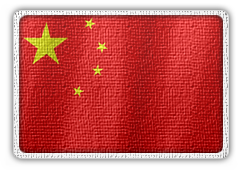|
|
Статистика
Онлайн всего: 256 Гостей: 256 Пользователей: 0
|
|
 China
China
View the map of the world with autonomies
Sorting by autonomy сharacteristics:
Name of autonomy
·
Autonomy population
thousands of people; the latest census It is based on the Freedom House Index, 2015. All countries of the world are located on a scale from 1 (most free) to 7 (least free). Countries whose ratings fall between 1.0 and 2.5 are “Free”, between 3.0 and 5.0 are "Partly Free," and those between 5.5 and 7.0 are "Not Free." GRP of the autonomy divided to GDP of the country (%) relative to the country (%): GRP per capita of the autonomy divided to GDP per capita of the country in %: population size of the titular ethnic group of the autonomy divided to overal population size of the autonomy (the latest census; expert estimations) It indicates a key characteristic of autonomy's ethnic identity - language or religion or both The presence of other (in addition to the titular group in the autonomy and the dominant group in the country) significant ethnic groups in the population of the autonomy It is based on the Regional Authority Index project that aims at measuring the powers of all the regions in 81 countries. Here the index "tier_selfrule" (2010) is used. It summarizes five dimensions of self-rule: institutional depth; policy scope; fiscal autonomy; borrowing autonomy; and the extent to which a region has an independent legislature and executive. The index takes value from 0 to 18 It is based on the Regional Authority Index project that aims at measuring the powers of all the regions in 81 countries. Here the index "tier_sharedrule" (2010) is used. It summarizes five dimensions of shared-rule: participation of a region in national law-making; intergovernmental meetings; the distribution of national tax revenues; borrowing; and constitutional change. The index takes value from 0 to 12 "Kin-state" is a state whose main population shares the ethnic characteristics of the titular ethnic group of the autonomy It indicates how the language of the titular ethnic group of the autonomy is learned in secondary schools in the autonomy It indicates whether the serious conflicts between the autonomy and the central government as well as between ethnic groups within the authority take place in 2001-2015. The level of conflict is determined on the basis of the annual reports of Conflict Barometer
-
One of the five autonomous regions of China, Guangxi Zhuang is located in the south of the country, on the border with Vietnam. Historically, it is the most connected with China among the autonomies. In 1952, the Guishi-Zhuang Autonomous Region was est...
Where is the autonomy situated:
Asia | China
Population: 43854538.00 people
Year of the creation of the autonomy: 1958
Autonomy area: 235001.00 km²
-
One of the five autonomous regions of China, Inner Mongolia is located in the north of the country and borders Mongolia and Russia; it is second largest China's province by area. Inner Mongolia is rich in coal, gas, and other natural resources. Eco...
Where is the autonomy situated:
Asia | China
Population: 23323347.00 people
Year of the creation of the autonomy: 1947
Autonomy area: 1181104.00 km²
-
One of the five autonomous regions of China, Ningxia-Hui is located in the north of the country, south of Inner Mongolia. The status of autonomy was received in 1958. The NHAR did not have the experience of independent statehood and became a part of Ch...
Where is the autonomy situated:
Asia | China
Population: 5486393.00 people
Year of the creation of the autonomy: 1958
Autonomy area: 52188.00 km²
-
One of the five autonomous regions of China, Tibet is located in the Tibetan Plateau. It has a long history of its statehood. Tibet was forcibly incorporated into the PRC and was divided into five regions, one of which in 1965 received the status of th...
Where is the autonomy situated:
Asia | China
Population: 2616329.00 people
Year of the creation of the autonomy: 1965
Autonomy area: 1178577.00 km²
-
The most western and largest province in China. The historical development of the region was determined by its links to East Turkestan - a short-lived self-proclaimed republic populated by Uyghurs. After the end of the Chinese Civil War, the territory ...
Where is the autonomy situated:
Asia | China
Population: 18459511.00 people
Year of the creation of the autonomy: 1955
Autonomy area: 1743441.00 km²
|
|